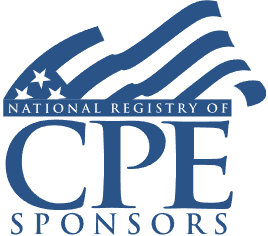State Transfer Pricing Audits: Forced Combinations, Add-Backs, IRC Section 482, and Recent Cases

Course Details
- smart_display Format
On-Demand
- signal_cellular_alt Difficulty Level
Intermediate
- work Practice Area
Corporate Tax
- event Date
Wednesday, June 2, 2021
- schedule Time
1:00 p.m. ET./10:00 a.m. PT
- timer Program Length
110 minutes
-
BARBRI is a NASBA CPE sponsor and this 110-minute webinar is accredited for 2.0 CPE credits.
This course will discuss the rise in state challenges of transfer pricing arrangements. Our panel of SALT veterans will cover choosing, documenting, and defending intercompany pricing agreements for multistate businesses.
Faculty

Ms. Roberts has been making state and local tax (SALT) less taxing for thousands of businesses over the last 25 years. As a director of the SALTovation team at TaxOps, she guides dynamic businesses through compliance and strategic planning focused on minimizing risk and strengthening tax positions. Ms. Roberts honed her specialty at Andersen Worldwide/Andersen LLP, KPMG and Deloitte before moving in-house with a Fortune 500 company to administer state and local tax. She has also led the national SALT practice at a regional firm. Ms. Roberts is a member of the Colorado Legislative Task Force Concerning Tax Policy and a frequent speaker, instructor and author on SALT issues for industry and professional organizations.

Ms. Lyon specializes in corporate and international tax and planning, including income tax provisions (ASC 740), business strategy tax impact analysis, transfer pricing, foreign compliance and reporting, M&A transaction and entity restructuring. She also counsels clients under audit and in their efforts to develop corporate tax departments and related support areas.
Description
Pricing arrangements between related parties should reflect the fair market value of goods and services exchanged. With adequate methodologies, prices charged and paid would mirror the prices between unrelated parties so that related parties don't avoid taxation or benefit unduly. There has been a recent surge in state examinations of perceived transfer pricing abuses.
Using IRC Section 482 as a base, some states scrutinize intercompany transactions to see if prices used are arms-length and the "best method" is being used. Other states rely on their own add-back statutes, forced combinations, and nexus determinations to challenge these arrangements. Since intercompany transactions are eliminated in a combined filing, many states use forced combinations as a resolution stating that separate filings lack economic substance. Taxpayers with proper transfer pricing studies have been able to defend separate filings successfully.
SALT practitioners working with multi-state companies need to understand transfer pricing methods and challenges to assist multistate clients in structuring and defending these arrangements.
Listen as our panel of SALT experts explains transfer pricing methods, the best method analysis rule, current cases, and defending pricing arrangements between related entities.
Outline
- State transfer pricing overview
- IRC Section 482
- Pricing studies
- State-specific methods
- Transfer pricing enforcement
- Defending transfer pricing arrangements
- Best practices
Benefits
The panel will review these and other critical issues:
- Selecting appropriate transfer pricing methods
- Documenting pricing arrangements
- How specific states are challenging transfer pricing arrangements
- Implementing the best method for pricing arrangements
- How states incorporate the rules under IRC Section 482
NASBA Details
Learning Objectives
After completing this course, you will be able to:
- Determine best practices for documenting transfer pricing agreements
- Decide steps to take now to prepare for a potential state transfer pricing audit
- Ascertain how to determine best methods according to IRC Section 482
- Identify specific states that use add-backs for related party transactions
- Field of Study: Taxes
- Level of Knowledge: Intermediate
- Advance Preparation: None
- Teaching Method: Seminar/Lecture
- Delivery Method: Group-Internet (via computer)
- Attendance Monitoring Method: Attendance is monitored electronically via a participant's PIN and through a series of attendance verification prompts displayed throughout the program
- Prerequisite: Three years+ business or public firm experience preparing complex tax forms and schedules, supervising other preparers or accountants. Specific knowledge and understanding of SALT taxation, nexus and apportionment as it applies to multi-state businesses.

Strafford Publications, Inc. is registered with the National Association of State Boards of Accountancy (NASBA) as a sponsor of continuing professional education on the National Registry of CPE Sponsors. State boards of Accountancy have final authority on the acceptance of individual courses for CPE Credits. Complaints regarding registered sponsons may be submitted to NASBA through its website: www.nasbaregistry.org.
Related Courses

State Individual Income Taxes on Nonresidents: Managing Inconsistent State Guidelines
Tuesday, April 22, 2025
1:00 p.m. ET./10:00 a.m. PT

State Taxation of Partnership Interest Sales: Recent Legislation, State Apportionment and Allocation Methods, Business vs. Nonbusiness Income
Wednesday, April 16, 2025
1:00 p.m. ET./10:00 a.m. PT

Expanding Economic Nexus Beyond State Sales Tax: Managing Unique Local and Indirect Taxes
Friday, April 11, 2025
1:00 PM E.T.